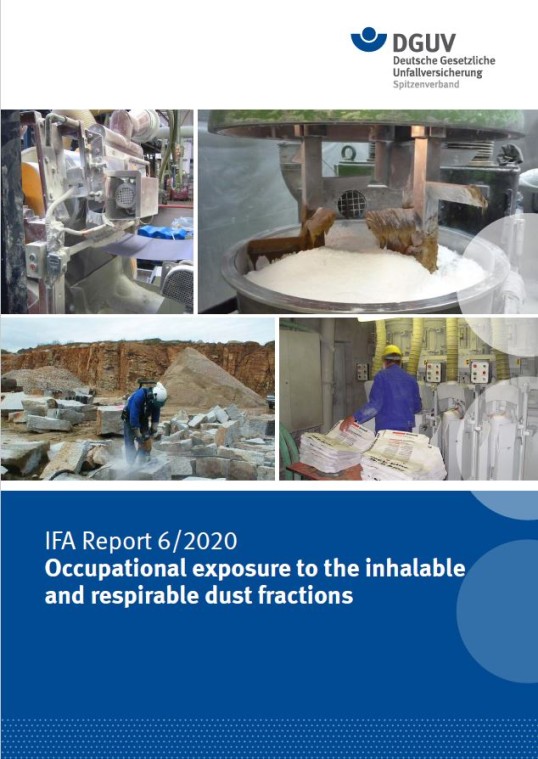Occupational exposure to inhalable and respirable dust fractions
IFA Report 6/2020e
Abstract:
Dusts are present at virtually all workplaces. Excessive inhalative exposure to dusts may lead to serious diseases of the respiratory tract. It is therefore imperative that workplaces associated with elevated dust exposure be identified, and suitable measures taken to protect workers.
This IFA Report provides a summary overview of occupational exposure to dust within the scope of the German general dust exposure limit (ASGW). The general dust exposure limit applies for assessment of the total exposure to low-solubility and insoluble dusts (including biopersistent granular dusts for which no substance-specific toxicity is known) for the respirable and inhalable fractions. Harmful effects upon health caused by the specific substances of which the dusts are comprised or contained within them as admixtures must be evaluated separately, and lie outside the scope of this report. The same applies to fibrous and ultrafine dusts. This report serves as a reference work for the incidence and occurrence, properties and associated health hazards of the dusts concerned. In addition, it contains information on setting the general dust exposure limit and on regulations to be observed where respirable or inhalable dust occur at workplaces.
Exposure data relating to workplace measurements from the Measurement system for exposure assessment of the German Social Accident Insurance Institutions (MGU) form a key part of the report's content. Over 35,000 items of exposure data each for respirable and inhalable dust, obtained during the period from 2005 to 2016 and documented in the IFA's MEGA database of measured data relating to exposure to hazardous substances at the workplace, were evaluated statistically and described. The results of the measurements are broken down in this report by sector and working area. The statistical collectives are further differentiated by measurement strategy, namely distinction between measurements performed on the person and those performed by stationary sampling systems erected in the working areas. In some areas, further differentiation of the statistical collectives was possible according to whether measurements performed on the person were accompanied by collection (exhaust) of the dust in the working area.
Bibliographic information

Published by: Deutsche Gesetzliche Unfallversicherung e. V. (DGUV), Glinkastr. 40, 10117 Berlin (authors: see list of authors on Page 302)

